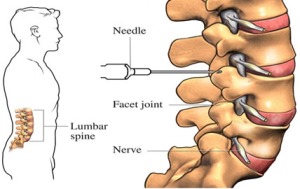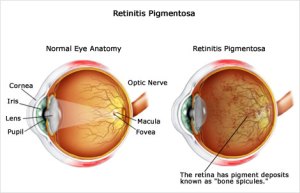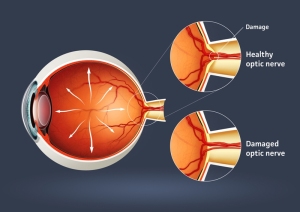Several new advances in treatment and testing have provided hope to the sufferers of several different medical conditions who are all too familiar with disability insurance. We often discuss conditions such as chronic back pain, diabetes, Alzheimer’s disease, and many other conditions that routinely leave patients unable to perform the material and substantial duties of their occupation. Fortunately, every day we get more and better treatments to relieve these debilitating conditions. As research continues and makes advances, some people who were previously permanently totally disabled may be able to find relief and recovery. As we’ve done in the past, today’s post is going to focus on some advances that are particularly relevant to claimants receiving disability benefits.
Surprising research on the effectiveness of steroid shots for lower back pain: Currently, epidural steroid injections are one of the most common non-surgical treatment for lower back pain. However, new analysis by researchers at John  Hopkins has shown that these steroid injections may be unnecessary. Their analysis shows that injections of saline and local anesthetic (such as Lidocaine) into the space around the spinal cord are as effective in relieving pain as steroid injections. Steroid injections have become increasingly controversial due to the debate between the usefulness of the treatment weighed against the side effects caused by these powerful chemicals. The side effects of an epidural steroid injection include raising blood sugar levels in diabetic patients, slowing wound healing, and an exacerbation of bone disease in older women. In addition, the number of steroid shots a patient may receive per year is limited, and there is always a risk of contamination leading to diseases such as fungal meningitis. While researchers admit that a larger study is needed before recommending that patients stop receiving epidural steroid injections, this is a good step towards reducing the side effects and risks of treatment of lower back pain.
Hopkins has shown that these steroid injections may be unnecessary. Their analysis shows that injections of saline and local anesthetic (such as Lidocaine) into the space around the spinal cord are as effective in relieving pain as steroid injections. Steroid injections have become increasingly controversial due to the debate between the usefulness of the treatment weighed against the side effects caused by these powerful chemicals. The side effects of an epidural steroid injection include raising blood sugar levels in diabetic patients, slowing wound healing, and an exacerbation of bone disease in older women. In addition, the number of steroid shots a patient may receive per year is limited, and there is always a risk of contamination leading to diseases such as fungal meningitis. While researchers admit that a larger study is needed before recommending that patients stop receiving epidural steroid injections, this is a good step towards reducing the side effects and risks of treatment of lower back pain.
New success in blocking the progression of Type 1 Diabetes: Using a drug originally marketed to treat psoriasis, researchers have been able to effectively block the progression of type 1 diabetes. A multi-center study has shown that patients receiving injections of the drug Alefacept were producing the same amount of insulin one year later as opposed to the placebo group, which saw their insulin production drop as is expected in cases of type 1 diabetes. Type 1 diabetes cannot be reversed or cured with current treatment, and the long-term complications include stroke, circulatory problems in extremities, heart disease, and visual impairments. This experimental treatment was also well-tolerated by the group, experiencing no serious adverse events during the study. The results of this study lend to the efficacy of the drug protocol, which will lead to larger population studies and possibly a new and better weapon in the arsenal against diabetes.
Dietary supplement may be able to reverse Alzheimer’s disease: In a small but intriguing study, researchers have been able to reverse the brain deterioration in Alzheimer’s patients using an extract consisting of aloe vera and several other key nutrients. The extract had few side effects and improved cognitive function in 46% of the patients, including several who were able to drastically reverse the symptoms of the disease. After 9 months of receiving the  supplement, nearly half of the patients scored significantly higher on a cognitive examination, saw improved immune function, and averaged a 377% increase in stem cell production. This study examined patients across the spectrum of Alzheimer’s, from the severely impaired to those who had been recently diagnosed with the disease. Researchers hope that this study will lead to a larger-scale test that will enable a new treatment protocol for this horrible disease.
supplement, nearly half of the patients scored significantly higher on a cognitive examination, saw improved immune function, and averaged a 377% increase in stem cell production. This study examined patients across the spectrum of Alzheimer’s, from the severely impaired to those who had been recently diagnosed with the disease. Researchers hope that this study will lead to a larger-scale test that will enable a new treatment protocol for this horrible disease.
Although these treatments provide hope for claimants suffering from these conditions, they are still far from being considered appropriate care for the conditions by the insurance companies. Until these treatments and others like it are vetted further and become approved and accepted by the medical community, it’s important for claimants to continue the courses of treatment recommended by the attending physicians. As time goes on, we will continue to find cures for previously incurable conditions and help many of the affected return to their jobs and live normal lives again. Until then, it’s important to protect your rights and make sure you receive the disability benefits you deserve while you can’t work.
If you have any questions about your disability claim, or would like more information, please visit our website to sign up for a free consultation or call us toll-free at (855) 828-4100.


 Age-related macular degeneration is a condition which usually affects individuals over the age of 50, although rare cases have been reported in younger patients. Due to damage to the retina, macular degeneration can cause loss of vision in the center of your vision field, called the macula. This central loss of vision makes it difficult to do such activities as reading or recognizing faces, although enough peripheral vision is often present to allow the patient to participate in activities of daily life. The initial symptom is often yellow deposits, called
Age-related macular degeneration is a condition which usually affects individuals over the age of 50, although rare cases have been reported in younger patients. Due to damage to the retina, macular degeneration can cause loss of vision in the center of your vision field, called the macula. This central loss of vision makes it difficult to do such activities as reading or recognizing faces, although enough peripheral vision is often present to allow the patient to participate in activities of daily life. The initial symptom is often yellow deposits, called  Retinitis pigmentosa is an inherited, degenerative eye disease that can cause severe vision impairment and often leads to blindness. It’s a very unpredictable disease, with some sufferers exhibiting symptoms from birth while others may not notice the condition until much later in life. It can also cause tunnel vision, night blindness, and a loss of central vision. Retinitis pigmentosa is caused by abnormalities in the retina, centered in either the
Retinitis pigmentosa is an inherited, degenerative eye disease that can cause severe vision impairment and often leads to blindness. It’s a very unpredictable disease, with some sufferers exhibiting symptoms from birth while others may not notice the condition until much later in life. It can also cause tunnel vision, night blindness, and a loss of central vision. Retinitis pigmentosa is caused by abnormalities in the retina, centered in either the 
 Glaucoma is not a specific disease itself but is the name for a group of diseases that affect the optic nerves and can cause blindness. In fact, glaucoma is the second-leading cause of blindness worldwide. It affects 1 out of every 200 people under the age of 50 and rarely exhibits any symptoms. The two main types of glaucoma are
Glaucoma is not a specific disease itself but is the name for a group of diseases that affect the optic nerves and can cause blindness. In fact, glaucoma is the second-leading cause of blindness worldwide. It affects 1 out of every 200 people under the age of 50 and rarely exhibits any symptoms. The two main types of glaucoma are
 In this double-blind Danish study, patents were treated with either a placebo or antibiotic regiment 3 times a day for 100 days and then re-evaluated. The placebo group showed no noticeable improvement while patients who received the antibiotics were better able to function after one year with less lower back pain, less leg pain, and fewer days off work due to the condition. These new treatment avenues could help some people who suffer from chronic back pain regain more independence and return to more normal activities.
In this double-blind Danish study, patents were treated with either a placebo or antibiotic regiment 3 times a day for 100 days and then re-evaluated. The placebo group showed no noticeable improvement while patients who received the antibiotics were better able to function after one year with less lower back pain, less leg pain, and fewer days off work due to the condition. These new treatment avenues could help some people who suffer from chronic back pain regain more independence and return to more normal activities. people consider today. The results show that the genetic overlaps are most significant between schizophrenia and bipolar disorder. They’re moderate between bipolar disorder and depression, schizophrenia and depression, and depression and ADHD. The lowest correlation of any significance was found between schizophrenia and autism. These correlations will help researchers find new protocols to treat behavioral patterns as opposed to specific conditions, allowing for more precise and patient-specific treatment therapies.
people consider today. The results show that the genetic overlaps are most significant between schizophrenia and bipolar disorder. They’re moderate between bipolar disorder and depression, schizophrenia and depression, and depression and ADHD. The lowest correlation of any significance was found between schizophrenia and autism. These correlations will help researchers find new protocols to treat behavioral patterns as opposed to specific conditions, allowing for more precise and patient-specific treatment therapies.



